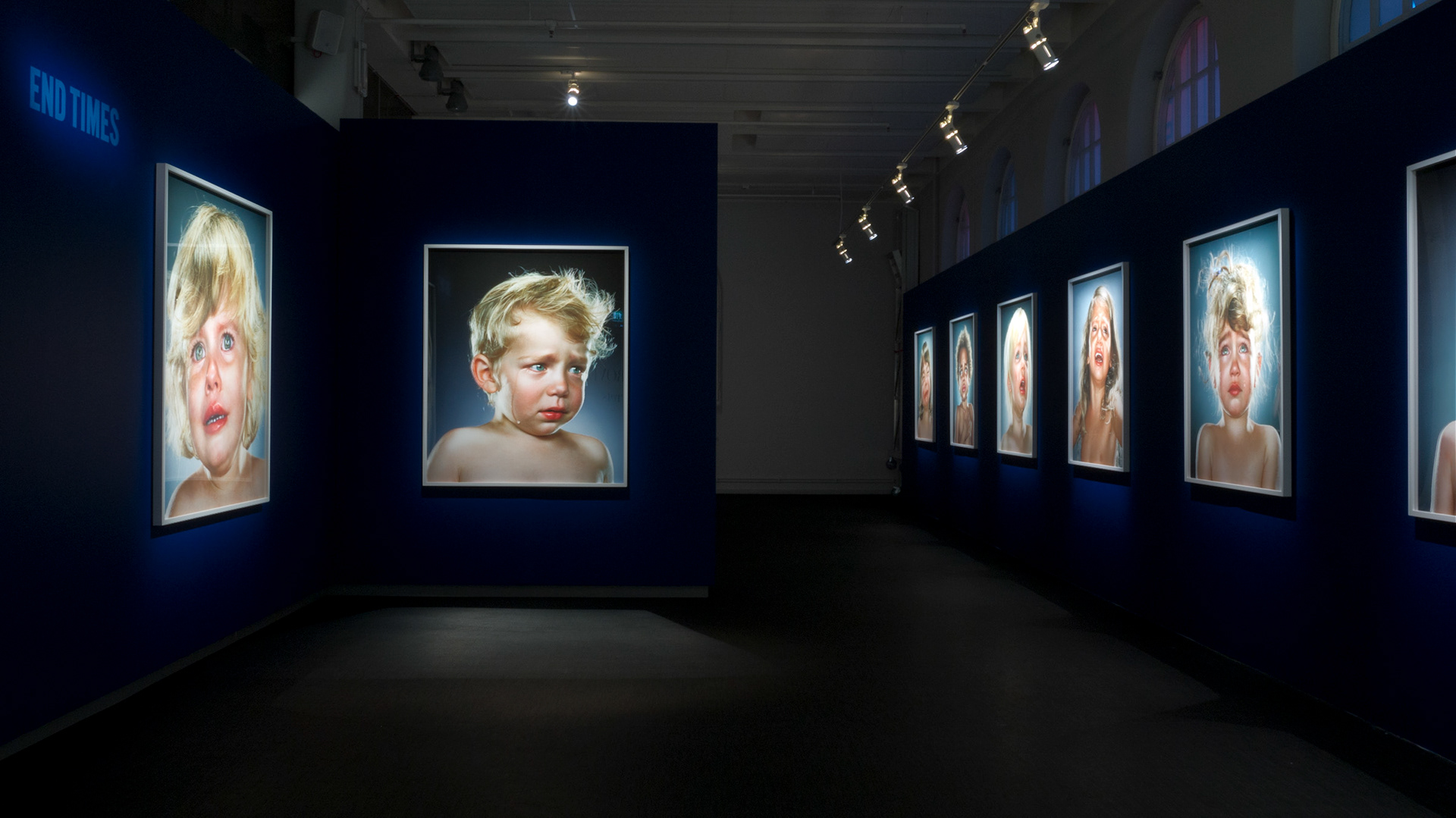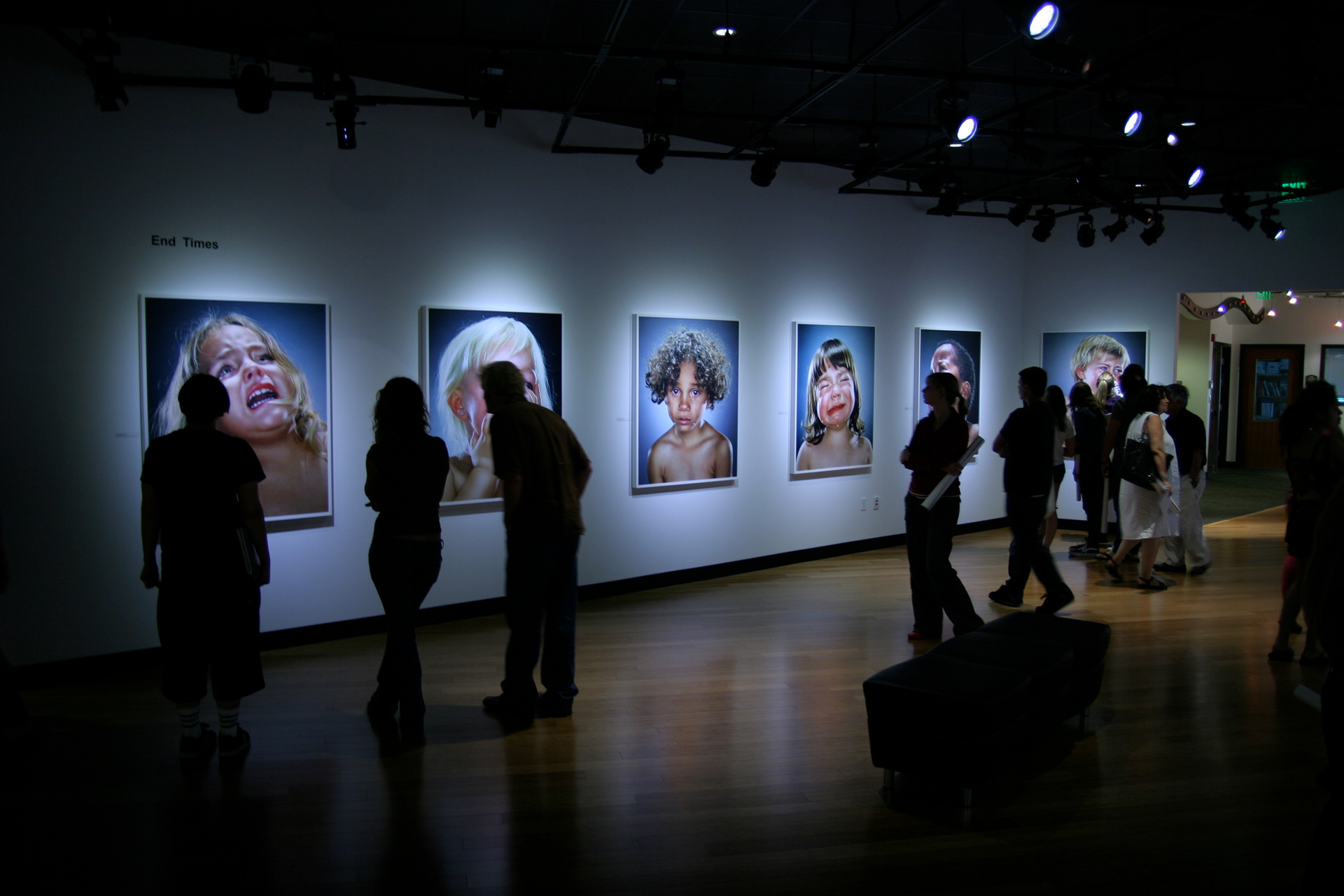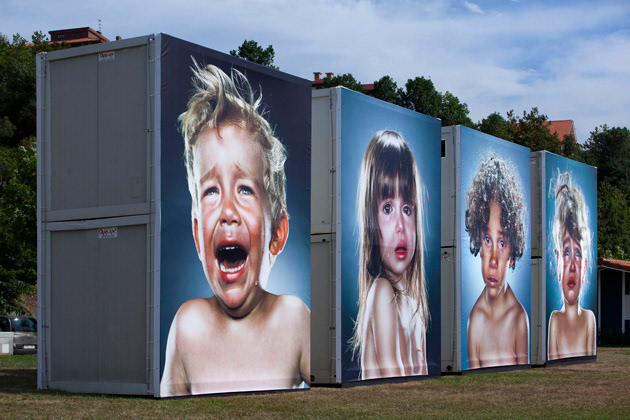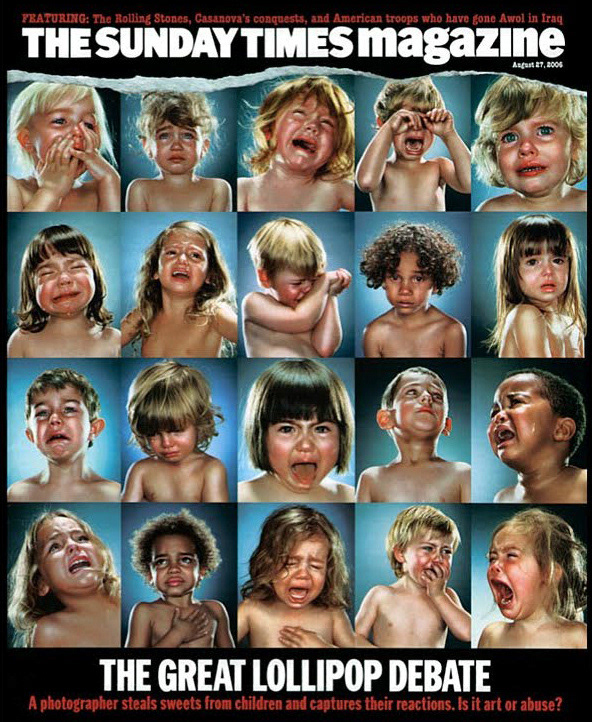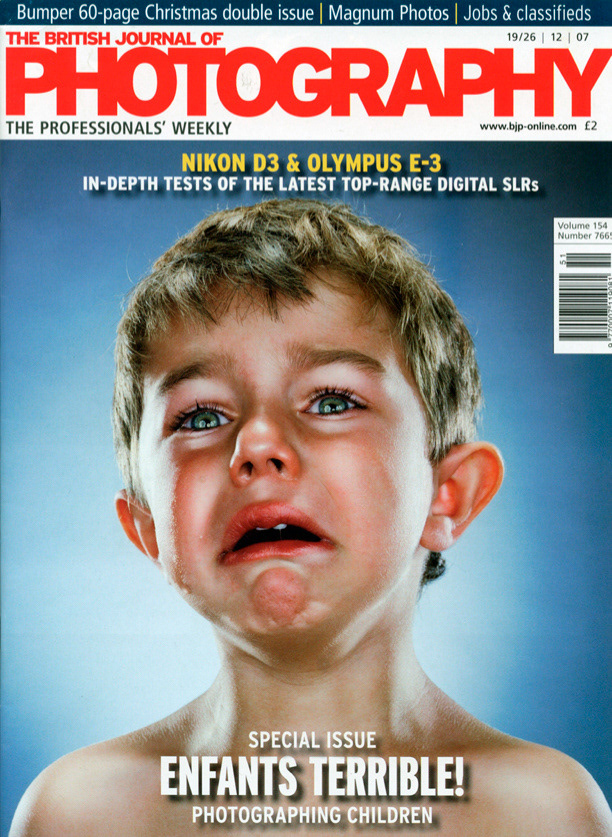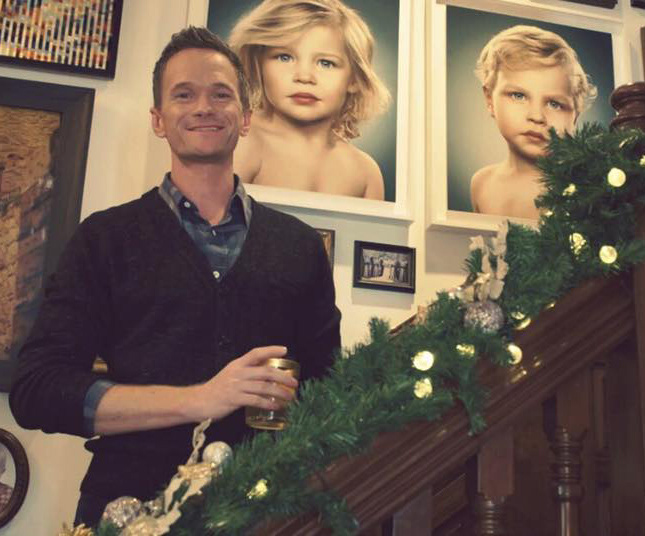
Hello and thank you for visiting my site and for checking out my children’s portraiture. I just wanted to say that your precious children are only this age for a short time! Having their vibrant personality and innate beauty captured forever will make you so happy. No one has ever regretted it. I hope we can schedule a session, thanks again!
Past clients include:
Neil Patrick Harris
Gwen Stefani
Shepard Fairey & Amanda Fairey
Alicia Keys & Swizz Beatz
Biography
b. 1967, Montreal. American.
Jill Greenberg is an internationally renowned artist and photographer whose work is instantly recognizable due to her personally executed postproduction and her mastery of studio lighting. Since the age of 10, Jill has staged photographs and created characters using the mediums of drawing, painting, sculpture, film and photography.
Her background in illustration and painting is evident in her work, and her background in semiotics and art history is evident in the subject matter she explores. An early adopter of digital effects, Greenberg has developed a world that is more intense, more razor- sharp than the one in which we actually reside. Jill Greenberg creates portraits that seize our attention and tug at our emotions.
Best known for her infamous series, "End Times," her work struck a nerve in its exploration of environmental themes exploiting the raw emotion of toddlers unable to use their words. Additionally, she is recognized for her portrait work of animals, exploring the trope of studio and celebrity portraiture as well as power dynamics between viewer and subject, humans and animals. These series were photographed on medium format film, then drum scanned, and finally enhanced with digital “hand painting” techniques. "Glass Ceiling," and "Horse," marked a return to the 80's feminist theory that inspired her senior thesis, "The Female Object" while an art student at RISD in the 80's. The “Horse” series investigated the persistent dual gender representations as well as parallels with the treatment of women. “Glass Ceiling” toyed with candy colored, luscious feminine hues which belied the violent undertones telegraphed by Greenberg rendering professional swimmers appearing headless and incapacitated, shot in full SCUBA gear at the bottom of a Culver City swimming pool.
Greenberg has been using Photoshop in 1990: early digital JPEG drawings and body part scans were the basis of her application to the Whitney Program for Independent Study in 1993. In 1997, her wide-angle, forced perspective fun-filled images captured the zeitgeist, and were much imitated. In 2001 Greenberg developed a lighting diagram for her simian portraits, and now the shiny, haloed 7-light studio technique have become the go-to art school photography assignment; the set-up was obsessively deconstructed on YouTube in multiple languages (despite having never been checked for accuracy.)
As a working photographer she travails to straddle the line between the commissioned work which funds her fine art practice. Jill’s images have been featured on covers of a number of major magazines, including Time Magazine, Newsweek, Wired, Fast Company, ESPN, Entertainment Weekly, New York Magazine, Los Angeles Magazine, The London Sunday Times Magazine, Los Angeles Times Magazine, OUT, The Village Voice, Smithsonian Magazine, Vibe, Complex, and many more. Her work has graced the pages of GQ, Oprah Magazine, Interview Magazine, Elle, Glamour, and Rolling Stone to name a few.
4 monographs have been released: "Monkey Portraits*" and "Bear Portraits" published by Little, Brown. In 2012, Rizzoli published the large format glossy "Horses". In 2013, TF Editores and DAP published her seminal series, "End Times" with essays by Bill Moyers, and Jo-Ann Conklin of Brown University.
Recent exhibitions include “Paintings” in New York City and Toronto, "End Times" and Monkey "Portraits" in Amsterdam, and a major mid-career survey at Stockholm's Fotografiska; and “Commentary and Dissent,” in Culver City, Los Angeles—a body of disparate work poking fun at both political art and advertising tropes.
Her background in illustration and painting is evident in her work, and her background in semiotics and art history is evident in the subject matter she explores. An early adopter of digital effects, Greenberg has developed a world that is more intense, more razor- sharp than the one in which we actually reside. Jill Greenberg creates portraits that seize our attention and tug at our emotions.
Best known for her infamous series, "End Times," her work struck a nerve in its exploration of environmental themes exploiting the raw emotion of toddlers unable to use their words. Additionally, she is recognized for her portrait work of animals, exploring the trope of studio and celebrity portraiture as well as power dynamics between viewer and subject, humans and animals. These series were photographed on medium format film, then drum scanned, and finally enhanced with digital “hand painting” techniques. "Glass Ceiling," and "Horse," marked a return to the 80's feminist theory that inspired her senior thesis, "The Female Object" while an art student at RISD in the 80's. The “Horse” series investigated the persistent dual gender representations as well as parallels with the treatment of women. “Glass Ceiling” toyed with candy colored, luscious feminine hues which belied the violent undertones telegraphed by Greenberg rendering professional swimmers appearing headless and incapacitated, shot in full SCUBA gear at the bottom of a Culver City swimming pool.
Greenberg has been using Photoshop in 1990: early digital JPEG drawings and body part scans were the basis of her application to the Whitney Program for Independent Study in 1993. In 1997, her wide-angle, forced perspective fun-filled images captured the zeitgeist, and were much imitated. In 2001 Greenberg developed a lighting diagram for her simian portraits, and now the shiny, haloed 7-light studio technique have become the go-to art school photography assignment; the set-up was obsessively deconstructed on YouTube in multiple languages (despite having never been checked for accuracy.)
As a working photographer she travails to straddle the line between the commissioned work which funds her fine art practice. Jill’s images have been featured on covers of a number of major magazines, including Time Magazine, Newsweek, Wired, Fast Company, ESPN, Entertainment Weekly, New York Magazine, Los Angeles Magazine, The London Sunday Times Magazine, Los Angeles Times Magazine, OUT, The Village Voice, Smithsonian Magazine, Vibe, Complex, and many more. Her work has graced the pages of GQ, Oprah Magazine, Interview Magazine, Elle, Glamour, and Rolling Stone to name a few.
4 monographs have been released: "Monkey Portraits*" and "Bear Portraits" published by Little, Brown. In 2012, Rizzoli published the large format glossy "Horses". In 2013, TF Editores and DAP published her seminal series, "End Times" with essays by Bill Moyers, and Jo-Ann Conklin of Brown University.
Recent exhibitions include “Paintings” in New York City and Toronto, "End Times" and Monkey "Portraits" in Amsterdam, and a major mid-career survey at Stockholm's Fotografiska; and “Commentary and Dissent,” in Culver City, Los Angeles—a body of disparate work poking fun at both political art and advertising tropes.
Epilogue
When I set out to create my series of crying children in 2005, I had no idea that it would cause such a stir in both the photography and cultural community at large, or that the images would be so widely appropriated for causes significantly at odds with my original intent.
Each image in the series, which I entitled “End Times”, was created by eliciting a child’s hyperbolic reaction to minimal provocation. In many cases, the young subjects (children ages 2 to 4) required no provocation at all, and were simply agitated by the act of being photographed. The reasons for their distress were common to those of any child: having something taken away. As any parent knows, rarely does a toddler sobbing convey any real pain or mental anguish. At that age, it is one of the main methods of communication, and in this particular instance, a short tantrum provoked by gentle manipulation. Indeed, I found the circular logic at play a striking paradox. The children’s worlds were not ending by having a lollipop taken away, but if only they had the capacity to understand what was happening to their world—to the environment—as a result of the backwards, conservative leadership in the White House in 2005, when the photographs were made, they would undoubtedly be distressed.
Before the exhibition in April, 2006, “End Times” was exhibited in a solo booth at the Scope art fair in New York. There the work elicited no controversy. A few weeks later, a pseudonymous photo blogger—a banker by day—discovered the work online and wrote that I should be “arrested and charged with child abuse” for my techniques, an all out polemic ensued. When American Photo magazine cited the blogger and called the work,“the most controversial photo series of the year” in their April 2006 print edition, the volume of online comments in response crashed their server. I was interviewed by BBC TV, Inside Edition, Good Morning America; was covered in The Los Angeles Times, The New York Times, The Sydney Morning Herald, and El Pais in Spain among others. The London Sunday Times magazine ran a six-page cover story called “The Great Lollipop Debate,” referring to one of my methods for making the children cry. While I had very much intended for my art to be provocative, I had no sense of the hornet’s nest into which I was poking a sharp stick.
Nevertheless the work itself garnered awards and was acquired by significant private collectors. “End Times” has been exhibited in solo shows in Los Angeles, New York, Paris, Adelaide, Australia, and in group shows at such venues as Brown University, the Museum of Contemporary Canadian Art in Toronto, Boston University, and Museo d’Arte Contemporanea, Rome (curated by Paul Wombell).
Because of the influx of attention, the images have been widely distributed and have served as a sort of visual accompaniment to a host of causes, institutions and businesses wishing to play on the sympathy evoked by an image of a child in distress. I don’t license my fine art work for advertising, and rarely for editorial or web use, but the images became a sort of visual meme and were stolen and used rampantly without my or the models’ guardians’ consent. To date, the images have been used in anti-child abuse campaigns, political campaigns for the far right in Switzerland and the communist party in Estonia, and for advertisements for phone applications and life insurance, as well as for countless Facebook and Twitter avatars.
If asked, I would never have allowed for the images to be used for any intent and purpose other than that of my own. But I am seldom asked. Blogs dedicated to deconstructing “The Jill Greenberg effect”—my lighting and retouching techniques from the series—continue to pop up in such disparate languages as Arabic and German, and I’ve been told that photography students worldwide are being assigned to reproduce the images as part of their coursework.
The photographs have a life of their own now. I created them, and, like children, have ambivalently let them out into the world.
